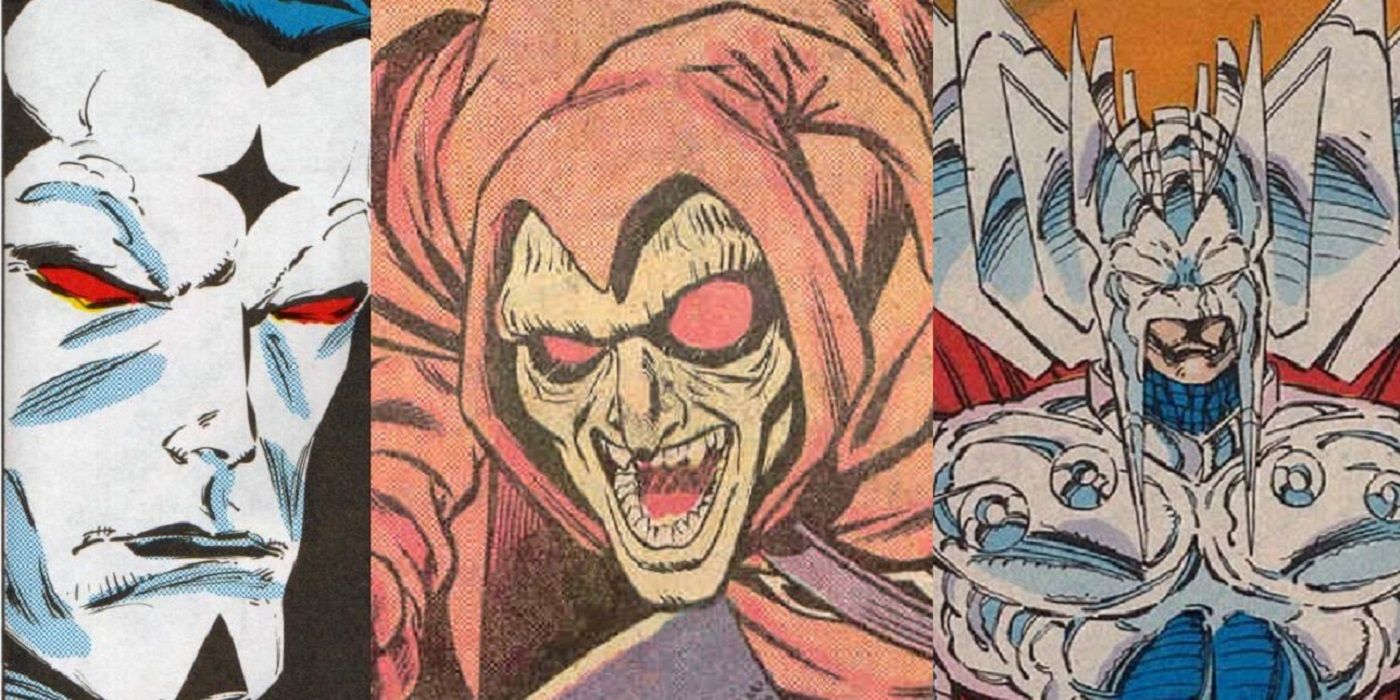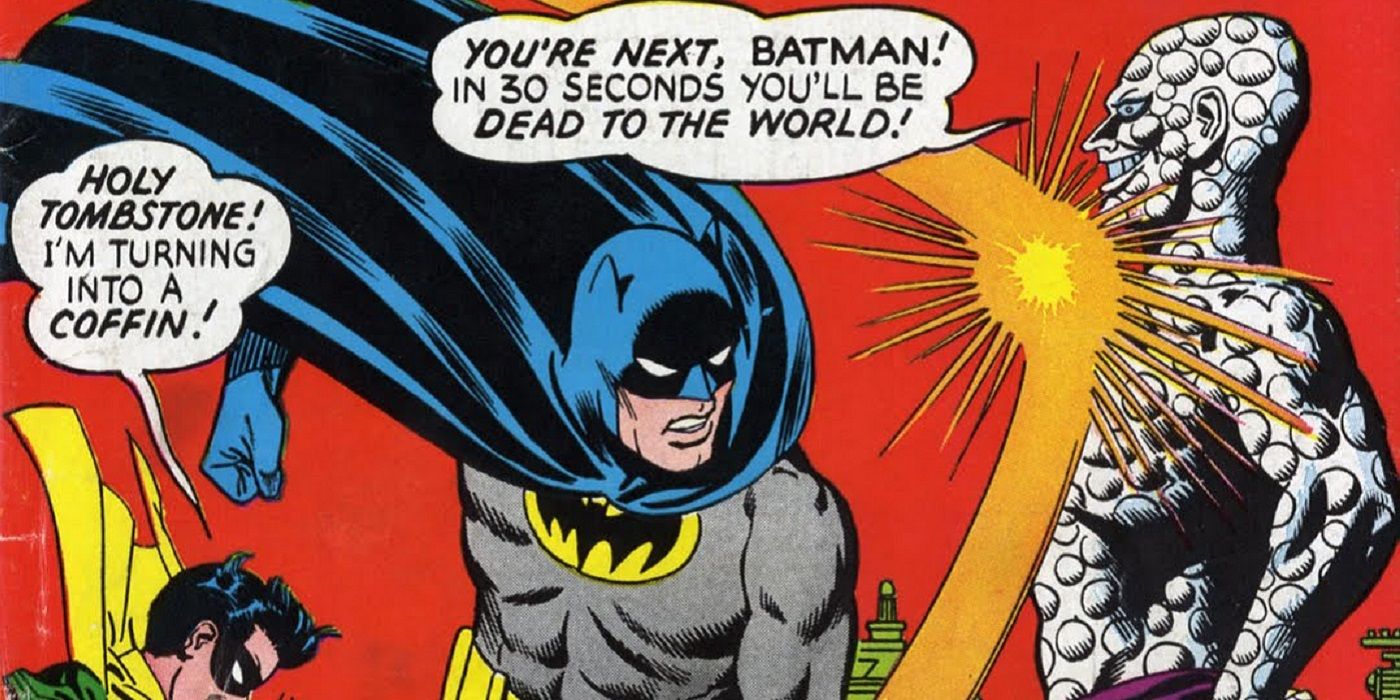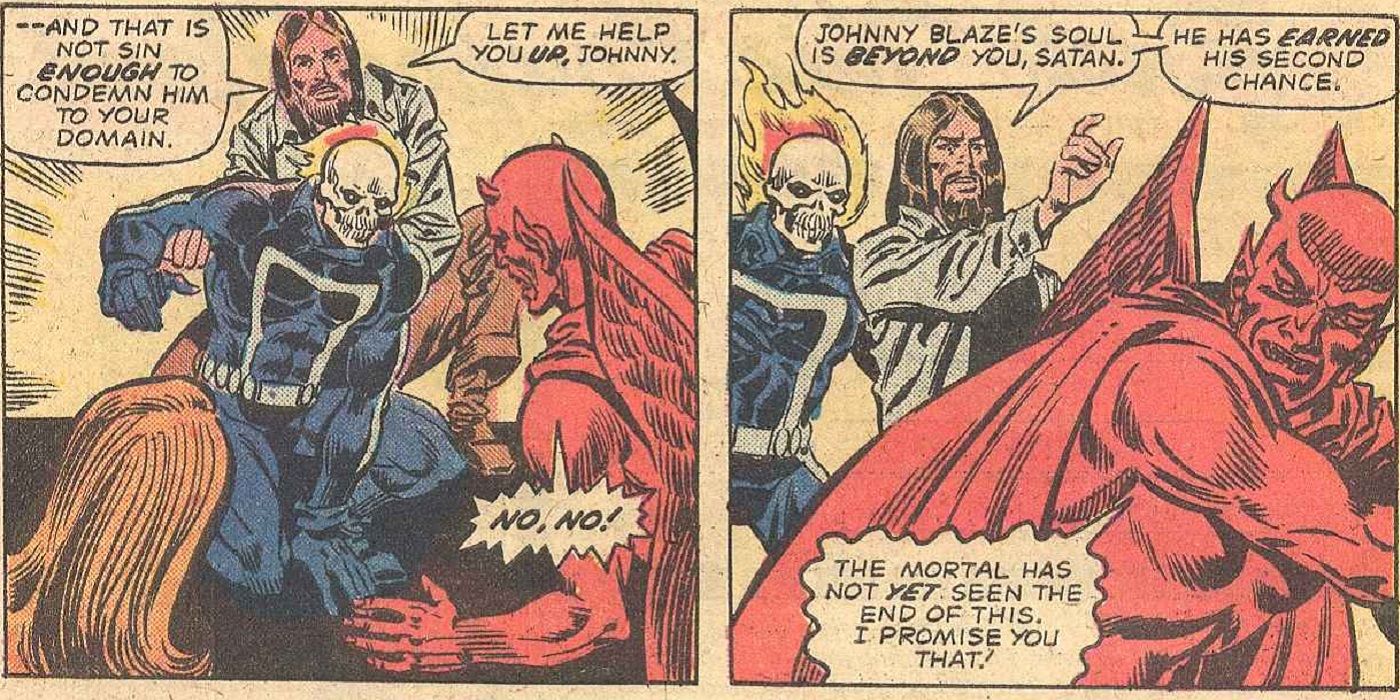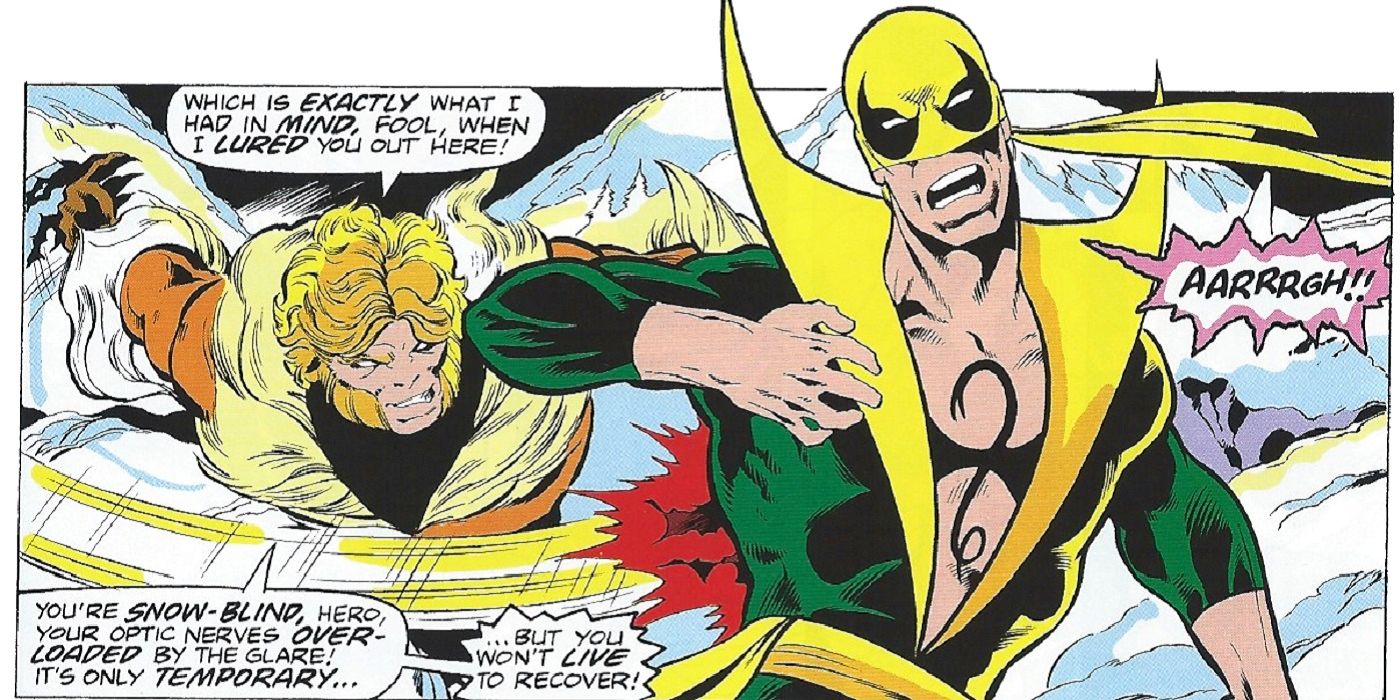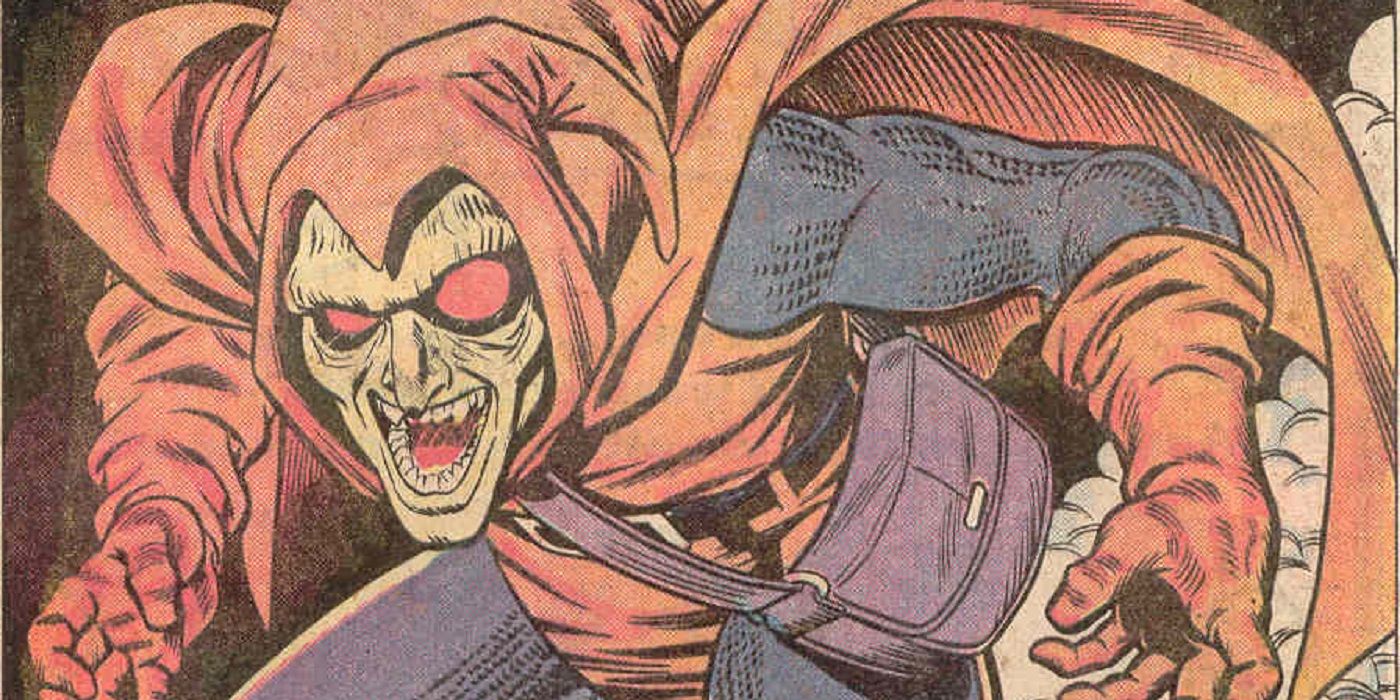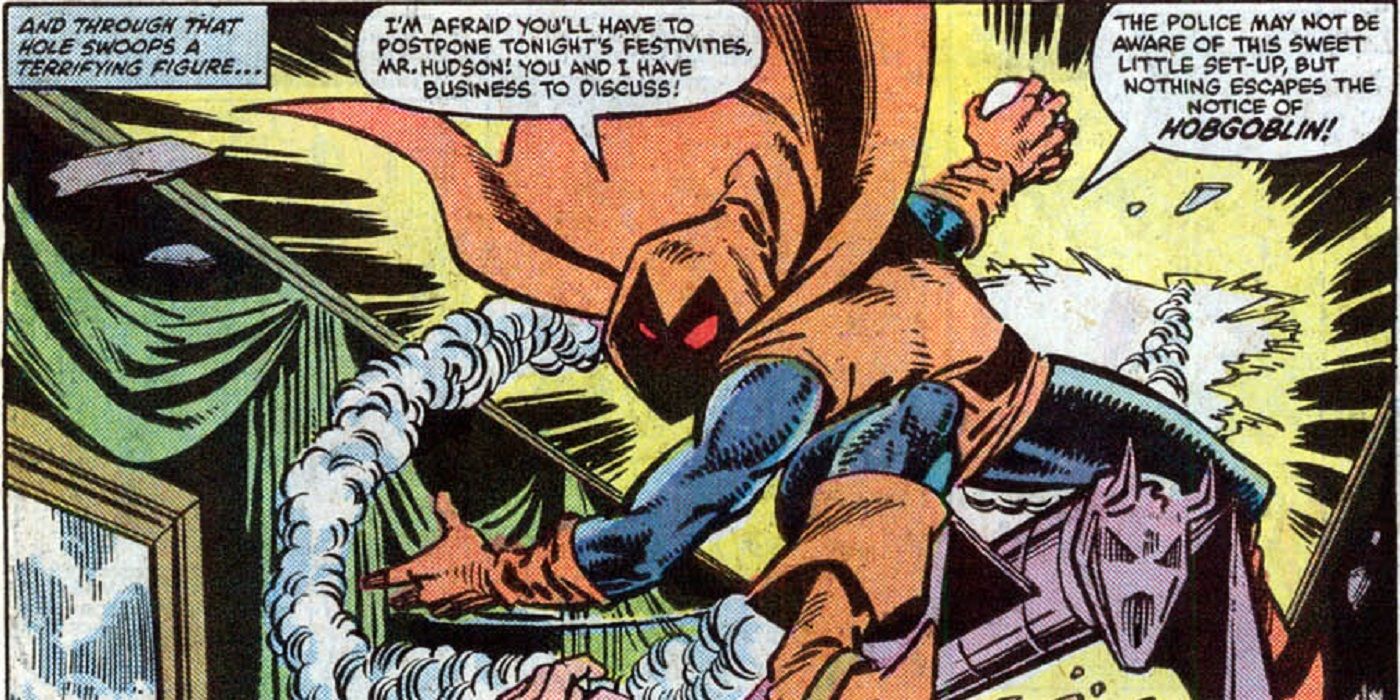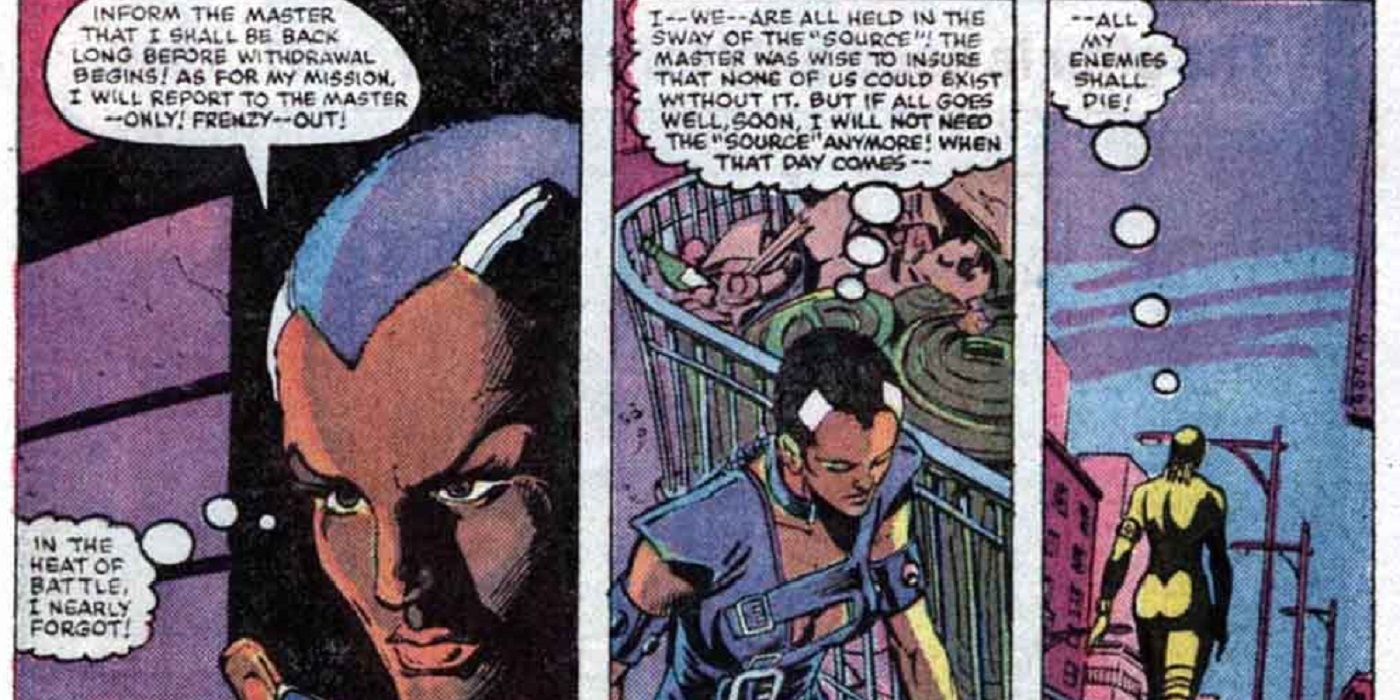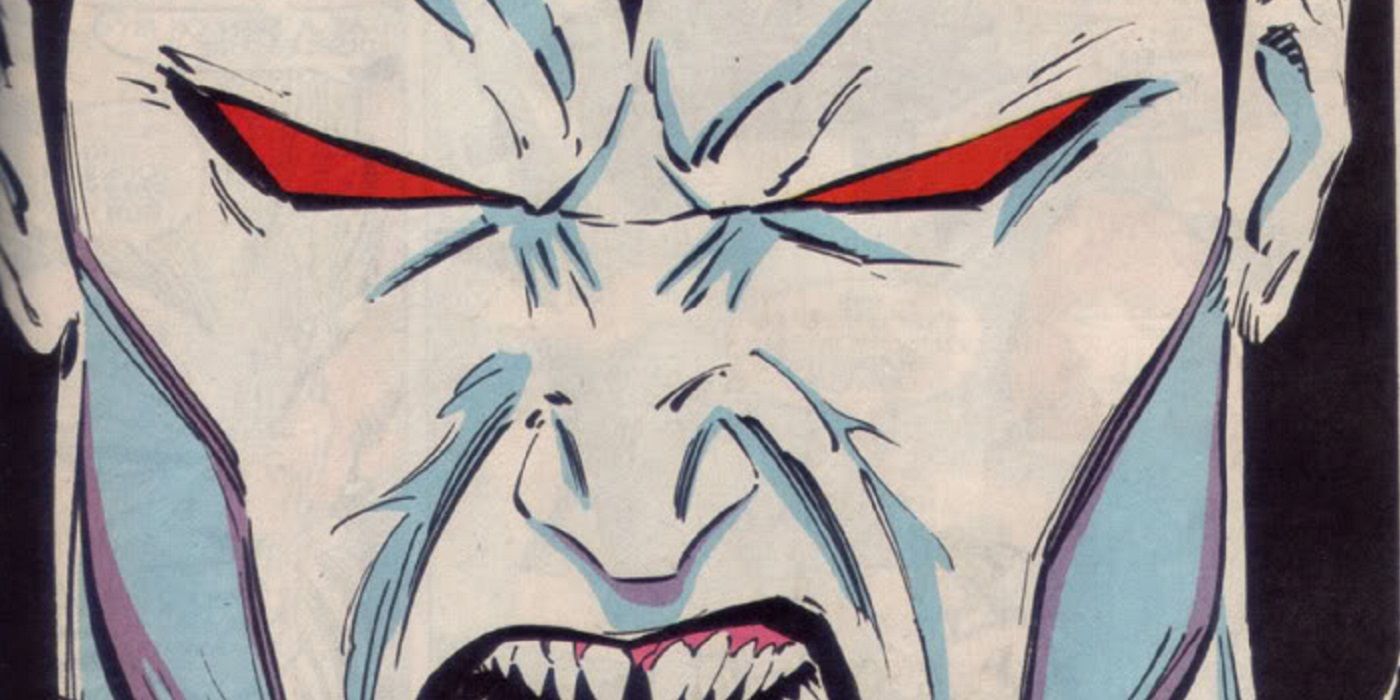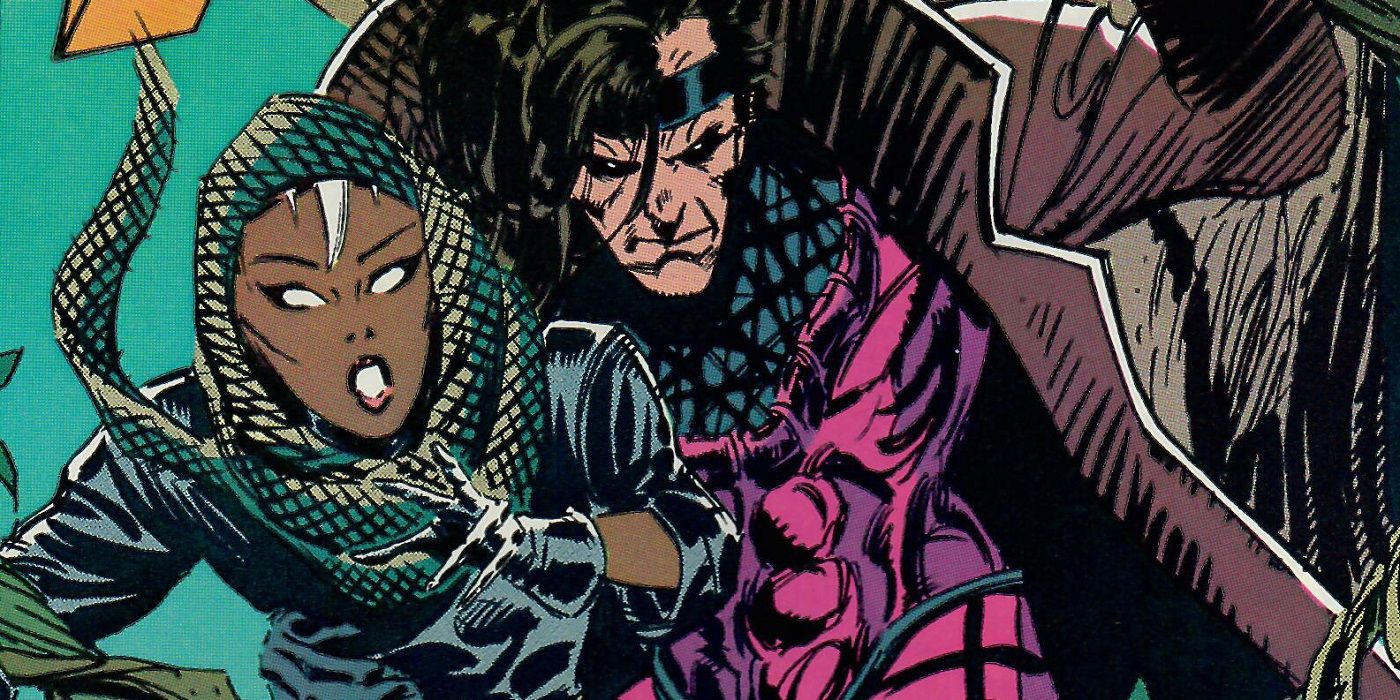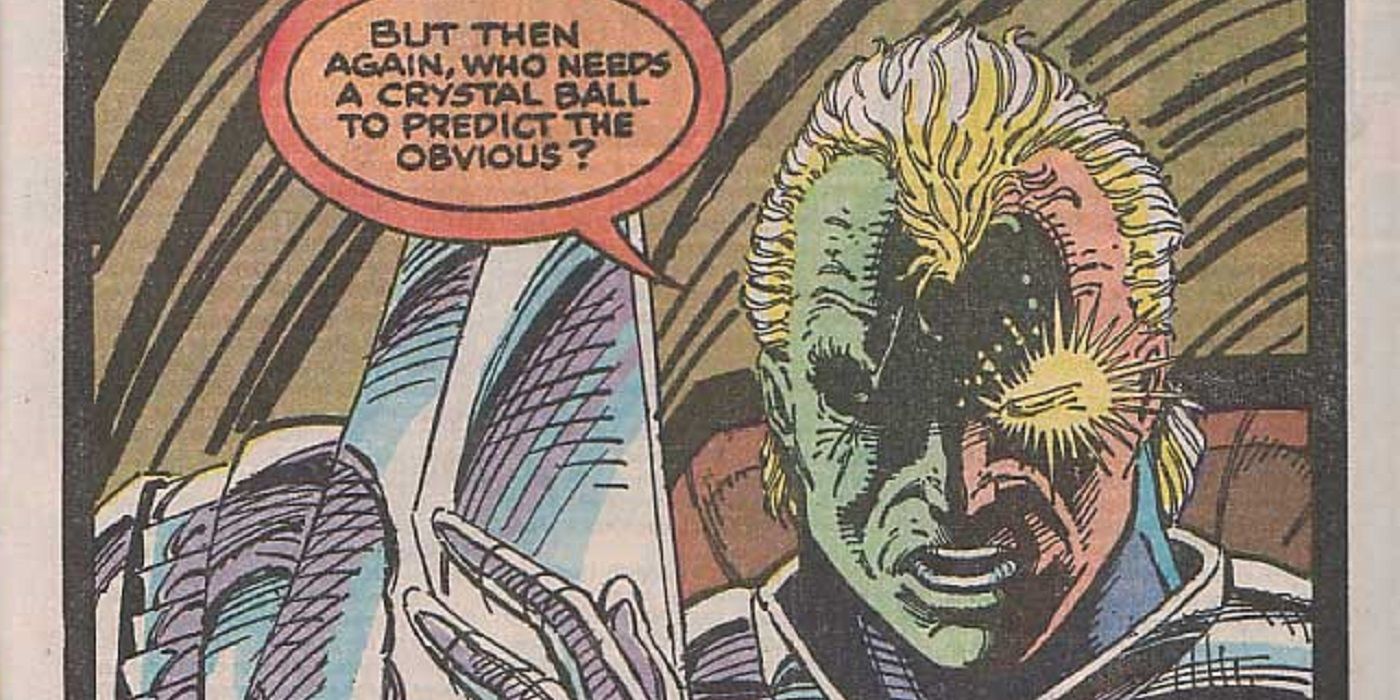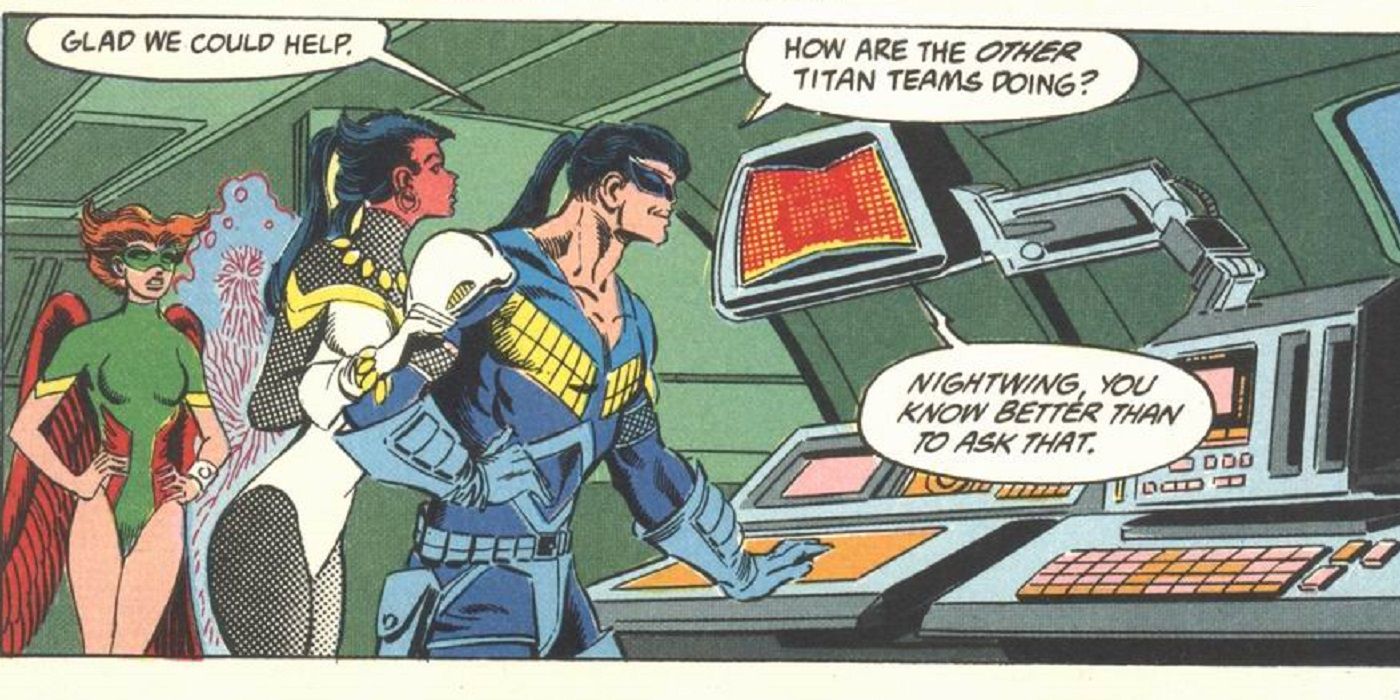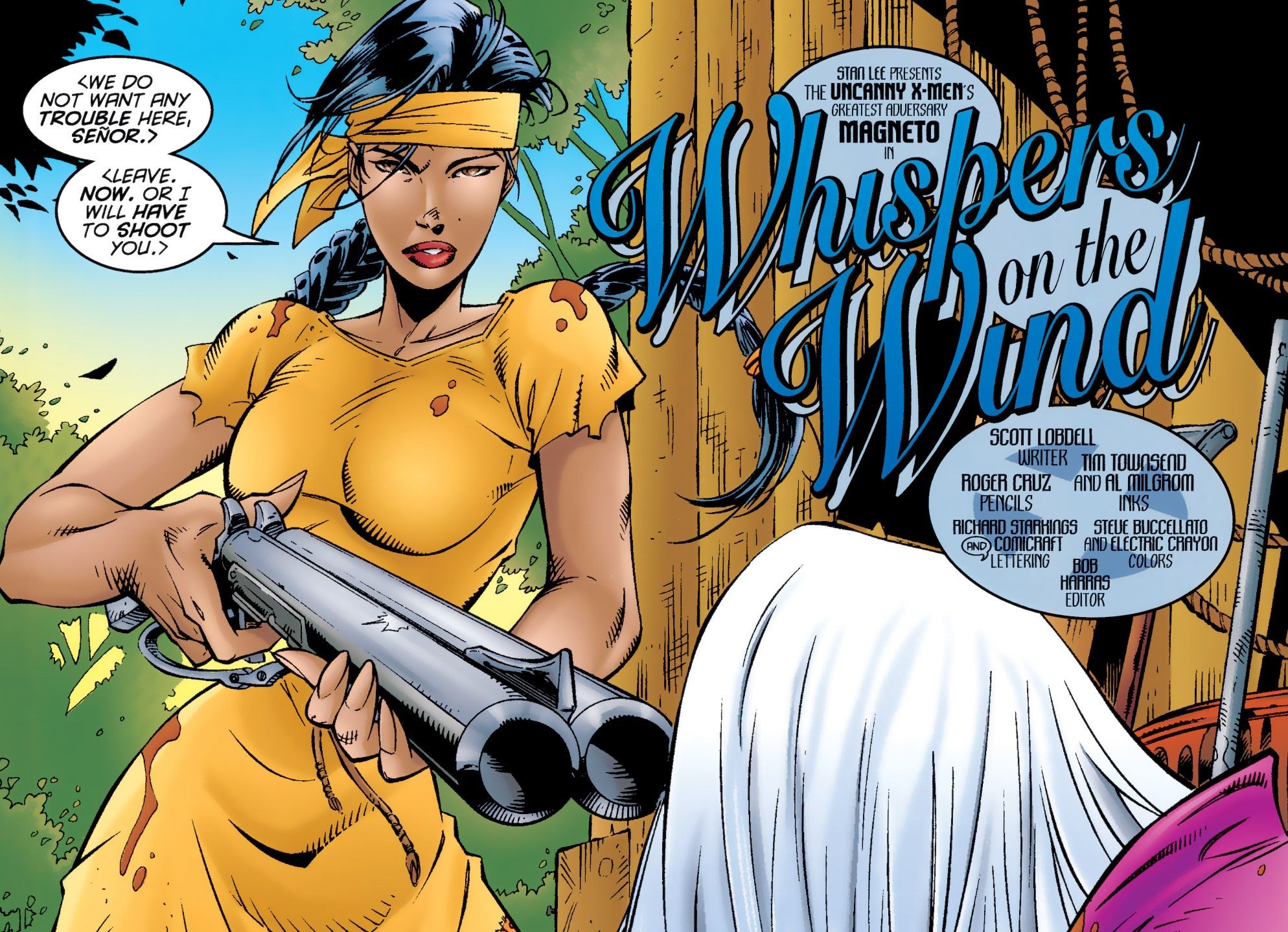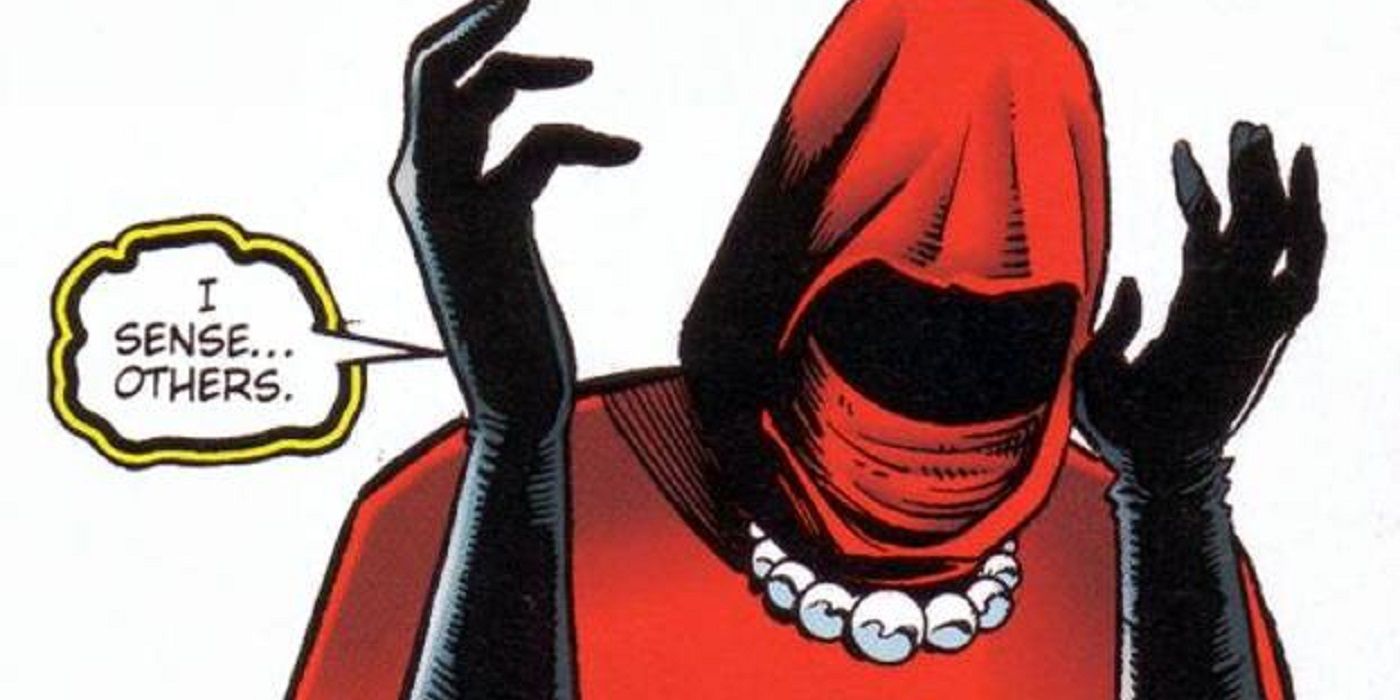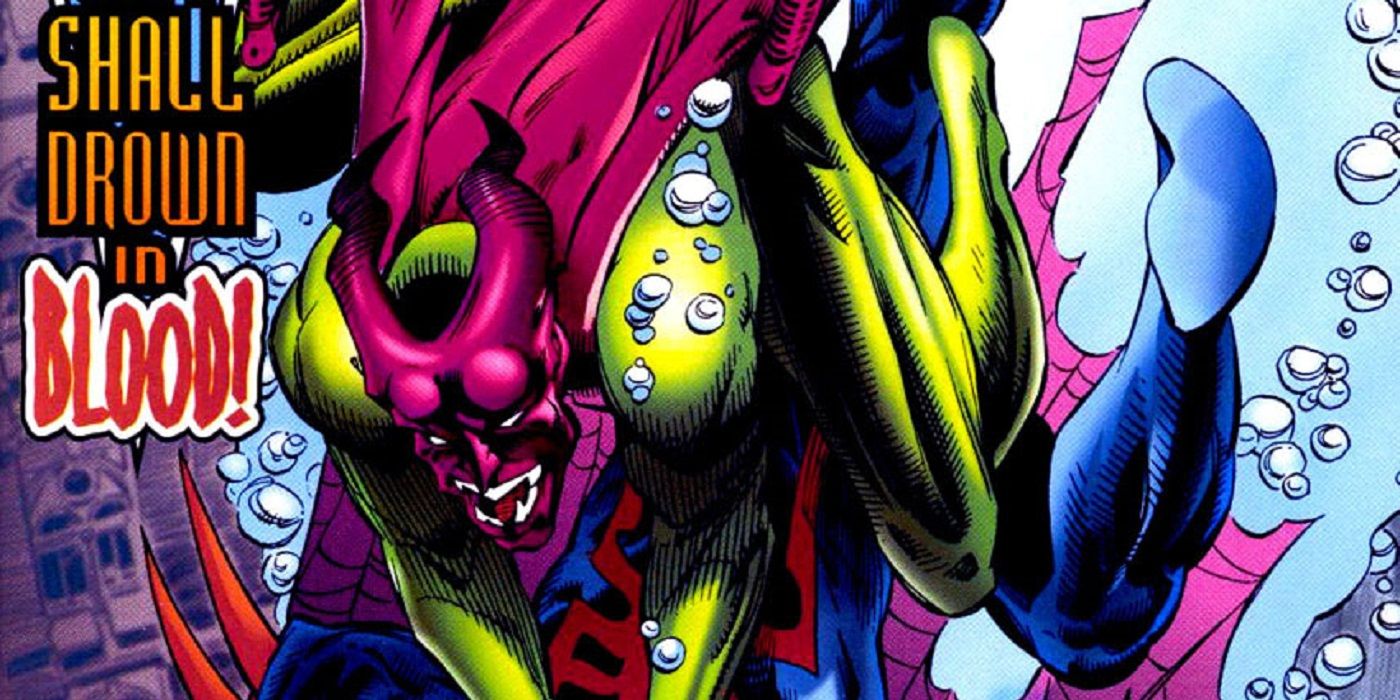Writing superhero comic books is an interesting experience because you're not working with your own characters. You're working within a larger framework, and therefore you often have to adjust what you're writing to fit into the stories of other writers. For instance, you might want to have Character X guest-star, but Character X is busy in another title, so you have to use Character Y instead.
RELATED: “Everything You Knew is a Lie”: 15 Most Altered Superhero Origins
In addition, if you begin a storyline but leave the book before it is completed, you might be shocked to learn how later writers finished your story for you. It might not be at all what you originally had in mind. Heck, quite often, even if a writer stays on a title, their storylines might take on lives of their own, as editorial would tell them to go in different directions. In this list, we look at instances where writers introduced mysterious characters with the intent to reveal them as being one character, but then circumstances changed (often involving the writer being removed and a new writer taking over) and the characters were revealed as someone else entirely. This list is in chronological order.
15 Outsider
One of the things we take for granted nowadays is the high level of interaction we have with comic book creators. Interviews, conventions, personal blogs -- there are so many different ways we can learn what comic book creators were thinking when they came up with certain plotlines. It's practically the backbone of Comic Book Legends Revealed. However, this is something that has only existed for about 40 years or so. As a result, creators who passed away before the late 1970s often left very little in the way of commentary on their work.
That was the case with Gardner Fox, who introduced the mysterious Outsider in "Detective Comics" #334. The Outsider only acted through intermediaries, sending villain after villain against Batman throughout 1964, 1965 and into 1966. However, an issue arose in 1966 when the "Batman" TV series became a huge smash success. Alfred was alive on the TV show, but had been killed off in the comics in 1964. It was determined, then, that the Outsider would be revealed to be Alfred, who had turned evil after he had been brought back to life. He would then quit being the Outsider and return to his butler duties. The issue is that we don't know who Fox originally intended for the Outsider to be, since he never told anyone. It's a Bat-mystery for the ages.
14 Ghost Rider's "Friend"
An interesting aspect of the early "Ghost Rider" stories is that Johnny Blaze got his ghastly supernatural abilities from Satan; not some made-up demon like Mephisto, mind you... just flat-out Satan. So, when Tony Isabella became the new regular writer for the "Ghost Rider" comic book series, he had an idea. If the villain was Satan, then why wouldn't Ghost Rider be aided on the good side of things by... well, Jesus Christ?
Isabella introduced the powerful and mysterious "Friend" to Ghost Rider, who helped defeat Satan in an early appearance. Eventually, Isabella was going to reveal that the Friend was Jesus. However, just when the story was about to pay off, new editor Jim Shooter took over the book and thought that was a terrible idea. So, he heavily re-wrote Isabella's final issue on the series (and had some panels re-drawn) to reveal that the "Friend" was actually a demonic illusion all along. "Satan" was also later retconned into being Mephisto.
13 Sabretooth
While we wouldn't count Sabretooth as a Wolverine knockoff (he didn't make our list of Wolverine knockoffs), it soon appeared evident to Sabretooth creators Chris Claremont and John Byrne that there easily could be a connection between the two feral creatures. In fact, Sabretooth's face was based on a rejected design that Byrne had submitted for use as Wolverine's in the pages of "X-Men." As it turned out, Dave Cockrum had already come up with an idea as to what Wolverine looked like under his mask.
Claremont and Byrne decided that Sabretooth was going to be revealed to be Wolverine's father. Creed was going to show up and murder Wolverine's love, Mariko, and Wolverine was going to have to ultimately murder his own father. Before this could happen, however, Byrne left "Uncanny X-Men," so they couldn't do the story as planned. Sabretooth and Wolverine ended up not even meeting until 1986. In "Wolverine: Origin," it was revealed that Sabretooth was definitely not Wolverine's dad.
12 Hobgoblin (Roger Stern's original plan)
Ever since Norman Osborn was killed off during the "Death of Gwen Stacy" storyline, writers on "Amazing Spider-Man" kept trying to bring the Green Goblin back, typically through introducing new people behind the mask (or having his son, Harry, take over). Roger Stern was no different, but he didn't want to use any of the previous Green Goblins, so he instead introduced the Hobgoblin, a new villain who had found one of Osborn's secret Green Goblin lairs and adapted his weapons and costumes to become a new criminal. Just like the original Green Goblin, the Hobgoblin's identity was going to be a secret.
However, early on, people seemed to guess that Stern was going to have the Hobgoblin revealed to be businessman Roderick Kingley, who Stern had introduced during his "Spectacular Spider-Man" run. So, Stern had the Hobgoblin appear at the same event as Kinglsey. However, that was going to be revealed to be Kinglsey's twin brother, who Kingsley used to fill-in for him at times. When Stern left the series before revealing the Hobgoblin's identity, incoming writer Tom DeFalco did not like the twin twist, so he decided to go in a different direction. Years later, Stern would return and reveal that Kingsley was the Hobgoblin all along!
11 Hobgoblin (Tom DeFalco's plan)
While Stern planned on revealing the Hobgoblin's identity in "Amazing Spider-Man" #264 (one issue longer than it took for Green Goblin's identity to be revealed), DeFalco saw how much people were interested in the mystery, so he strung it out for a longer period of time. The main person that people were guessing for the Hobgoblin following the appearance of "Kingsley" was longtime Daily Bugle reporter Ned Leeds.
DeFalco, however, planned on having it revealed that the Kingpin's son, Richard Fisk, would be the Hobgoblin. But DeFalco left the book before that could be revealed (and DeFalco had told others that Leeds was going to be the Hobgoblin, just to cover up his true intentions). Thus, despite Ned being killed off in the one-shot "Spider-Man vs. Wolverine," it was revealed that Leeds was the Hobgoblin, but he had just been replaced by someone else following his murder. Again, though, Stern ultimately revealed that Leeds was a dupe and that Kingsley was the Hobgoblin all along.
10 The Rose
Soon after starting on "Amazing Spider-Man," DeFalco also introduced a new villain called the Rose. DeFalco thought that it would be cool to have a character who didn't fight the superhero himself, but just worked as a middle man, being hired by bigger villains and then contracting the work to henchmen. The Rose's identity was not intended to be a mystery, but since he wore a mask, readers soon began to write in trying to guess his secret identity. So of course DeFalco decided to go along with it.
He then decided that, hey, since Stern's original guy for Hobgoblin, Roderick Kingsley, did act pretty suspicious early on, that it should be him that would be the Rose. When DeFalco left the book, however, his personal pick for the Hobgoblin, Richard Fisk, was instead revealed as the Rose's secret identity (a number of other villains have used it in the years since, though).
9 The Master of the Alliance of Evil
When "X-Factor" launched, writer Bob Layton wanted to give the book its own identity outside of just being an "X-Men" spin-off. As a result, he really did not tie-in with the other X-books, giving the X-Factor heroes their own distinct adventures. Early on, he began to introduce new super-villains to fight the team, with Tower showing up in "X-Factor" #3, Frenzy in "X-Factor" #4 and the entire Alliance of Evil in "X-Factor" #5 (Timeshadow and Stinger were the other members). When Tower and Frenzy debuted, they kept talking about their master.
As it turned out, the head of the Alliance of Evil was going to be the former "Daredevil" villain, The Owl, who Layton was going to beef up and turn into a major new villain. However, Layton was instead removed from the series, and incoming writer Louise Simonson instead decided that the mysterious villain would be a new character called Apocalypse. The final page of "X-Factor" #5 was re-drawn and the character revealed himself as Apocalypse. Interestingly, the character design was not fully complete yet, so "X-Factor" #6 was the first time we saw the classic Apocalypse design.
8 Mister Sinister
When Chris Claremont introduced Mister Sinister in the pages of "Uncanny X-Men," his silly name and his over-the-top appearance were intended as clues as to the character's origin. You see, Mister Sinister was going to be revealed to be personifications of a mutant who was in the same orphanage as Scott Summers when Summers was a boy. This mutant could not age and was perpetually stuck in the mindset of being a boy, so he instead created a boy's idea of what a super-villain would look like and be named (essentially a dark twist on Billy Batson and Captain Marvel).
Ultimately, however, Claremont did not get the chance to make his reveal and Mister Sinister was instead revealed to be Nathaniel Essex, a 19th century scientist who was given powers and immortality by Apocalypse. The back-up stories Claremont wrote with the boy in the orphanage now read pretty oddly, although perhaps it was meant to be that the boy was just a disguise Sinister used?
7 Gambit
Another one of Claremont's plots that he never got a chance to see to fruition was the reveal of the truth about Gambit. Years earlier, in the pages of "New Teen Titans," Marv Wolfman and George Perez had introduced Terra, a young teen girl who was very reminiscent of the popular Kitty Pryde character over in "Uncanny X-Men." That was intentional, as Wolfman and Perez knew fans would draw those comparisons, but then they would shock them by revealing that Terra was an evil spy, sent by Deathstroke to infiltrate the Titans!
Claremont then decided to do his own twist on that idea with the introduction of Gambit in "Uncanny X-Men" #266. Gambit was going to be revealed to be a sleeper agent sent by Mister Sinister to infiltrate the X-Men. However, Claremont left the title before that plot could see the light of day, and incoming writers Jim Lee (and then Fabian Nicieza) had a more heroic angle on Gambit (although he did turn out to have a past with Sinister that the X-Men were none too pleased with).
6 Stryfe
During his work as writer of "New Mutants," Rob Liefeld was taking an approach similar to that of Stan Lee in the early days of Marvel, which is that he was playing fast and free with ideas, just coming up with what he thought was cool, and then figure out how they fit in after the fact. It was thanks to this approach that Cable had a few different origins back then. This led to the final issue of "New Mutants," which was leading into the new series, "X-Force." At the close of that issue, Liefeld (and scripter Fabian Nicieza) shocked the world by having the leader of the Mutant Liberation Front, the evil Stryfe, take off his helmet and reveal himself to be... Cable, the leader of the New Mutants!?
As it turned out, the plan at the time was to have Stryfe be Cable at a different point in Cable's timeline, a point where Cable had turned evil. So the good Cable was the younger version of Stryfe, who was the evil Cable. Marvel decided to go a different route, and instead revealed that Stryfe was a clone of Cable (even there, the debate was whether Cable should be the clone or should Stryfe be the clone).
5 Monarch
In 1991, DC Comics Annuals were all part of a crossover called "Armageddon 2001," which was about the idea that one of the heroes of Earth would become the villainous Monarch in the future and take over the world by 2001. A time traveler from 2001, Waverider, traveled to 1991; when he would make contact with the 1991 version of a hero, he would see their future and learn if they were the one who became Monarch.
Monarch was going to be revealed as Captain Atom. However, in the early days of the internet, the information had been accidentally revealed to some early fan gossip group and the information spread like wildfire around the 'net. So, DC quickly changed courses, and since "Hawk and Dove" had just been canceled, Hawk turned out to be Monarch in the finale of Armageddon 2001. Captain Atom instead became Monarch's arch-rival. Later writers, though, kept turning Captain Atom into Monarch to try to get the story back to its original ending.
4 Team Titans Leader
Oddly enough, in the "Teen Titans Annual" that tied in with "Armageddon 2001," it was revealed that there was another tyrant in 2001, the evil Lord Chaos, who was at war with the Team Titans. The Titans of the future had broken into small splinter groups, each one working independently of each other so that Chaos could not take the entire group down at once.
One group of the Team Titans were sent back to 1991 to kill Donna Troy, as her unborn son was destined to grow up to become Lord Chaos. While they were in the future, though, the Titans were led by a mysterious leader who only appeared as a voice. This leader was allegedly once a Titan. Marv Wolfman initially was going to reveal that the leader was a grown-up Danny Chase (who had a spy background, so it was a good fit, really). Instead, the Team Titans were revealed to be working for Monarch all along and Monarch (also a former Titan as Hawk) was the mysterious leader.
3 Joseph
The mystery of Joseph is a strange one, since there actually wasn't any mystery when he first debuted; it was only after the fact that the character became retroactively mysterious. When "Joseph" debuted in "Uncanny X-Men" #327 and appeared to be an amnesiac and de-aged Magneto, there really wasn't any debate about it. In fact, it was plainly stated inside the comic book that this was actually a de-aged Magneto.
However, as time went by, editorial wasn't sure if they really wanted Joseph to be revealed as Magneto, so what was never intended to be a "who is Joseph?" mystery became just that. They thought of alternate explanations, like perhaps he was Proteus instead! Ultimately, Lobdell left the book before the real Magneto returned in "Uncanny X-Men" #350 (Lobdell did the plot for part of that issue, but not the part that involved Magneto's reveal) and it was later explained that Joseph was a clone of Magneto.
2 Omen
In 1996, Dan Jurgens was given the task of re-launching the "Teen Titans," only this time with brand-new characters (along with a de-aged Atom as their leader/mentor). When the group was formed, a mysterious robed being known as Omen was the one who brought the characters together for their equally mysterious benefactor, Mister Jupiter (Jupiter had funded the Titans in the past, and was now going to support this new team).
Initially, Jurgens planned on Omen to be the return of Raven, who had gone through some bad stuff at the end of the previous "New Titans" series. After introducing Omen, though, Jurgens was told that he could not use any of the "New Teen Titans" era characters, so instead he revealed that Omen was Lilith, an old member of the Teen Titans from years ago. He also revealed that Lilith was Mister Jupiter's illegitimate daughter. He never got a chance to reveal who her mother was, though.
1 Goblin 2099
Goblin 2099 was a character introduced in the pages of "Spider-Man 2099" that was designed to be a foil of Spider-Man, as the Goblin would challenge him on whether he was doing enough for the people of Downtown, Nueva York. He was sort of like an updated version of Green Arrow and Green Lantern in "Hard Travelin' Heroes," although the Goblin's methods were a bit more extreme.
The 2099 line of books was falling apart and Peter David ultimately left the title. Before leaving, he had left some hints that Miguel O'Hara's brother, Gabe, was the Goblin, but those were just meant as red herrings. The real Goblin was going to be recurring character Father Jennifer D'Angelo, who was heavily involved in the lives of the people of Downtown. However, David's successor on the book went with David's red herring and had Gabe revealed as the Goblin. Luckily, soon after, a "2099" one-shot revealed this to be a shape-shifter claiming to be the Goblin. Recently, David was able to use his original idea in the pages of the current "Spider-Man 2099" series.
Amusingly enough, David was the guy who wrote the issue revealing Ned Leeds as the Hogoblin. So, a decade later, he went through what Roger Stern did by seeing someone else reveal the identity of a character he had planned to reveal as someone else. Also like Stern, years later, he got to fix that original "mistake."
What is your all-time favorite secret identity reveal? Green Goblin? Sensor Girl? Winter Soldier? Let us know in the comments section!

